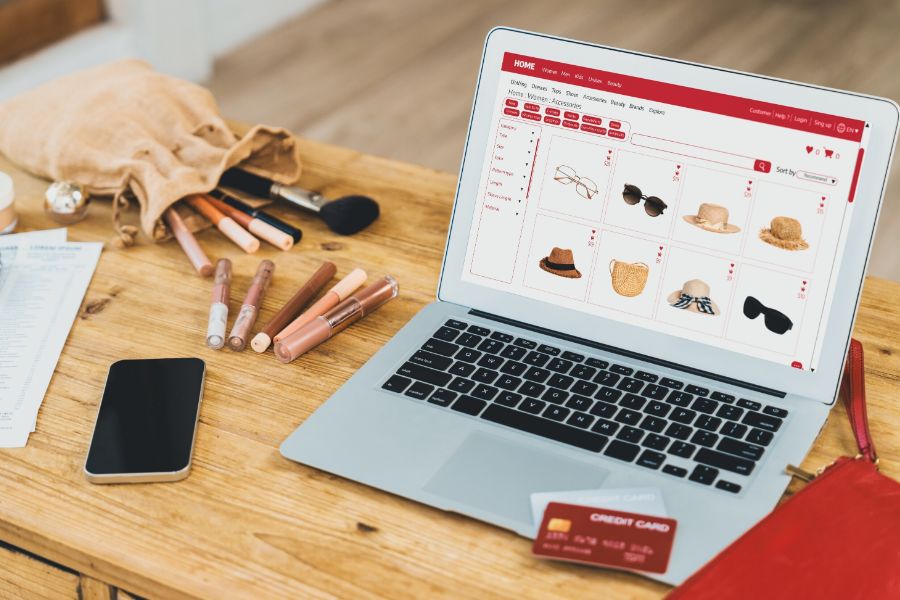The days of physical retail businesses having complete influence over the consumer market are long gone. Customers who previously depended solely on retail locations can now buy things online. How can store owners maintain a balance between offline and online places? In this blog, we will discuss the pros and cons of online vs offline marketing, as well as the bridge between these options – which is omnichannel commerce.
Retail Online – Pros
Cheap and easy setup
In comparison to a physical store, an eCommerce site is far easier to start up. Websites are much easier to implement nowadays, with customizable eCommerce solutions coming in pre-packaged forms. Online marketplaces, such as eBay, require little technical expertise to get started, coming in pre-packaged forms. An extra benefit is that if you want to sell through online marketplaces, you will already have a market to tap into. As a result, you won’t even need to perform any promotion to generate sales.
24-hour sales
Online markets and websites may operate 24 hours a day, seven days a week. To make a sale, you don’t have to be always present at the store. Customers may shop whenever it is convenient for them, and you can provide services for many more hours per day than you could in a physical store. More selling time equals more sales, therefore you should be able to sell more products.
More data collection
You can obtain a lot more insight into your clients’ purchasing habits if you go online. They can range from demographics such as age and location to initial search phrases, similar products of interest, and much more. All of this information may be simply gathered using a basic analytics system. Tracking this amount of detail around a physical business would be extremely difficult and time-consuming, however, with a website, all the data is immediately collected.
Retail Online – Cons
More competitive market
The shopping street may have a limited number of stores, but the internet has no restrictions on the number of businesses that may compete for your business. Also, marketplaces that sell directly to consumers (such as Amazon) will be in direct competition with you, and will frequently be able to undercut your rates due to their better purchasing power. Let’s take Amazon as an example – with close to 386 billion dollars in net sales in 2020, this company is the largest e-retailer in the United States.
To stand out from the crowd, you’ll need a lot of promotions, an outstanding customer service approach, and a suitable price plan. It takes a lot of effort to balance all three and get it perfect in order to maximize your revenues.
Less trust from customers
You will find it more difficult to upsell other things to your consumers if you are unable to communicate with them. It is much simpler to keep someone’s attention if you can engage them in a face-to-face dialogue or (in the case of fashion boutiques) offer them real-life fitting experiences. As a result, online outlets will generate less loyalty. People are more inclined to be loyal to a physical store than they are to a faceless website or an online seller.
Cyber thread/frauds
One of the most significant downsides of online shopping is fraud. In reality, many individuals are drawn to great deals that appear to be too good to be true. Fake online shopping portals show out some fantastic things on their websites in order to get people to purchase them. Many examples of cybercrime have been reported in which consumers’ debit or credit card information has been exploited to conduct fraudulent transactions.
Retail Offline – Pros
Cropped shot of a young store owner handing a parcel to a customer over the counter
More ‘touch and feel’
When people purchase online, they can’t try things on or feel the quality of the items. This might result in you missing out on a sale on an item that someone would have paid good money for if they had been able to try it on or feel it in their hands. But this is not the case for offline businesses. This means you don’t have to deal with a lot more returns, which can be both time- and cost-efficient.
Instant support
So, after searching the entire shop, customers come across two very different but equally amazing things and are unsure which to choose. For example, what if their mobile internet connection is terrible – they can’t Google it. However, that is alright in the case of brick-and-mortar stores. The in-house salesperson can tell them all they need to know about each item and assist them in making an informed selection.
Products at hand immediately
In offline retail, customers don’t have to wait days for the product to arrive. After they’ve decided on the best thing for you, they can pay for it and take it home right away. Compared to online retail, there is no more waiting time for delivery – customers can easily buy something on the go. This is especially useful for people who are in urgent need of a particular product.

Retail Offline – Cons
Overcrowding
During the holiday seasons, physical stores tend to become overcrowded. This puts high pressure on the staff and supply chains. There will also be long waiting lines which can greatly challenge customers’ patience and loyalty. Almost everyone’s greatest fear in peak hours is shopping in a crowded location with sweaty people.
More expensive costs
Online shopping websites often feature discounts and cashback programs, and the prices of things on online shopping websites are frequently lower than the prices of products advertised in stores. As a result, if you are a customer looking for discounts and cashback, physical shopping is less preferable. Needless to say, the difference in price is understandable, because offline stores often have higher running costs, such as rental fees for the location and additional staff.
No 24/7 opening
Another disadvantage of offline shopping is that there is no 24/7 opening. As a result, we will have fewer options when going to the store. Most of the time, we can only visit three to four stores in a day since there isn’t enough time, yet we can simply check thousands of online stores and websites while sitting at home.
Another drawback of offline purchasing is the investment of time. We wasted a lot of time going from one store to the next. Moreover, in the daytime, offline purchasing is only available for a few hours. As a result, we are unable to conduct offline purchasing at night.
The path for the future: Why choose omnichannel retail?
Brother and sister with face masks in bookstore during pandemic
Now that you know some pros and cons of online vs offline marketing in retail, let’s move on to how the future may look like in the future. In fact, research has shown that omnichannel strategies drive an 80% higher level of incremental store visits.
Indeed, omnichannel retail can be the future of businesses. It creates a seamless shopping experience where customers’ convenience is put in the center. This combines the advantages of both online and offline platforms while eliminating the disadvantages. It is then beneficial for both retailers and consumers.
In order to go omnichannel, businesses might need some tools to optimize the process. Among many tools available on the market nowadays, ConnectPOS is a powerful point of sale provider that specializes in omnichannel. The system provides multiple tools such as click-and-collect, real-time synchronization and many more.
It’s time to step up the omnichannel game with us – contact our team for more information!
ConnectPOS is a all-in-one point of sale solution tailored to meet your eCommerce POS needs, streamline business operations, boost sales, and enhance customer experience in diverse industries. We offer custom POS with features, pricing, and plans to suit your unique business requirements.




